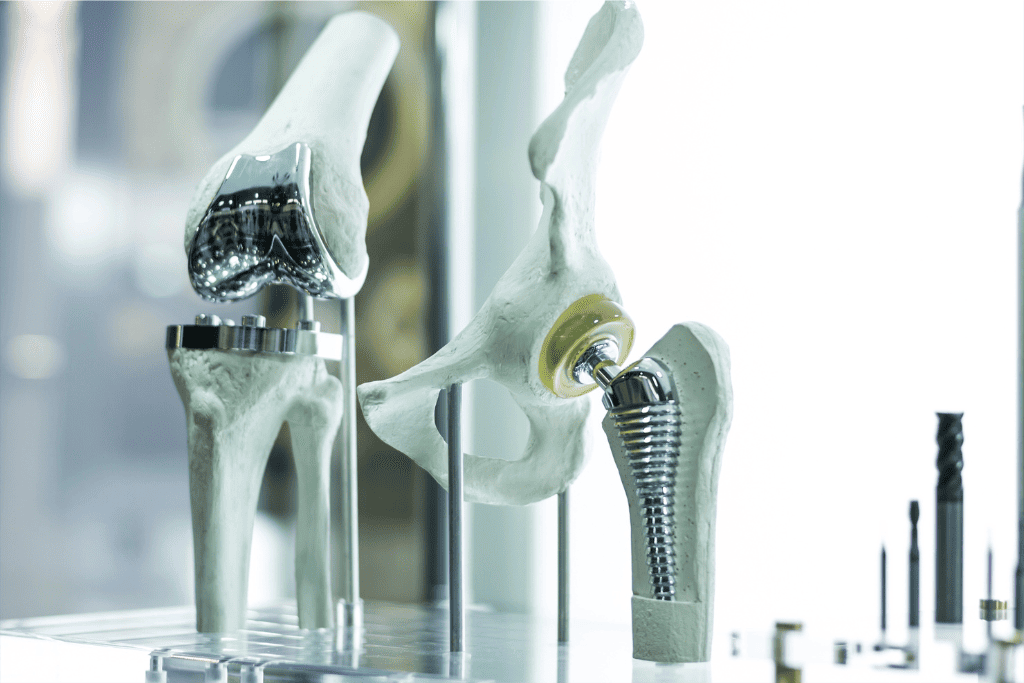Joint Replacement and Longevity: How Long Will Your New Joint Last?

Living with debilitating joint pain is a daily reality for millions worldwide. When conservative treatments like physical therapy, medication, or injections no longer provide relief, the conversation often turns to joint replacement surgery.
These procedures, most commonly for the hip, knee, or shoulder, restore mobility, alleviate chronic pain, and dramatically improve a patient’s quality of life.
So, how long does a new joint last after replacement surgery?
The answer is complex and depends on a variety of factors, but the short version is incredibly encouraging:
Modern joint replacements are designed for extreme durability, and with the right care, many can last a lifetime.
Read on to learn about what influences implant longevity, the expected lifespans, and practical advice on how to get the most out of your new joint.
Understanding Joint Replacement Surgery
Joint replacement surgery, or arthroplasty, is a procedure where a damaged or diseased joint is replaced with a prosthetic implant, with the goal of replicating the function of the natural joint for pain-free movement. Here are the three types of surgery:
Hip Replacement: Replaces the head of the femur (thigh bone) and the socket in the pelvis. The most common cause is osteoarthritis.
Knee Replacement: The surfaces of the femur, tibia (shin bone), and sometimes the patella (kneecap) are replaced with metal and plastic components; it’s also most often performed due to advanced arthritis.
Shoulder Replacement: Shoulder replacement surgery involves replacing the humeral head and the glenoid (the shoulder socket) to relieve pain caused by severe arthritis or following a severe fracture.
Factors That Affect Implant Longevity
Implant Materials
The materials used in the prosthetic joint have a direct impact on its durability. Modern implants are crafted from the following advanced materials designed to withstand decades of use:
- Metal Alloys: Cobalt-chromium and titanium are commonly used for the ball and stem components of hip and knee replacements due to their strength and biocompatibility.
- Polyethylene: A highly durable plastic is used as a bearing surface in hip, knee and shoulder implants, serving as a smooth cushion between the metal components. Newer, highly cross-linked polyethylene is significantly more wear-resistant than older versions.
- Ceramic: In some cases, a ceramic ball is used in hip replacements. Ceramic-on-ceramic or ceramic-on-polyethylene bearings are highly resistant to wear, making them an excellent option for younger, more active patients.
Patient-Specific Factors
Your body’s unique characteristics and how you use your new joint are the most significant factors affecting prosthetic joint longevity.
Younger patients typically place more stress on their implants over a longer period, making wear and tear a greater concern. However, advances in materials have made implants far more suitable for this demographic.
Additionally, maintaining a healthy body weight is one of the most important things a patient can do to extend the life of their joint. Every extra pound of weight places several pounds of force on the knee and hip joints, accelerating the wear of the polyethylene bearing.
While a joint replacement is designed to help you return to an active life, the type of activity you engage in matters. Low-impact exercises are excellent, while high-impact activities can shorten the implant’s lifespan.
Underlying Medical Conditions
Certain health issues can impact the long-term success of the implant. Conditions like osteoporosis can affect bone quality, and chronic inflammatory diseases, such as rheumatoid arthritis, may require careful management to ensure the joint remains stable and free from complications.
Average Lifespan of Joint Replacements
While the above factors are a major determinant, we can look at statistics to provide an encouraging general answer to how long joint replacements last:
Total Hip Replacement
These prostheses are incredibly durable. Studies show that 85% to 90% of total hip replacements last for 20 years or more, and new data on the latest implants suggest that many last for 30 years or even a lifetime.
Total Knee Replacement
Knee implants are also very durable, with success rates slightly lower than hips due to the unique biomechanics of the joint. Approximately 80% to 85% of knee replacements last for 20 years, and newer designs are expected to push this number even higher.
Shoulder Replacement
The longevity of shoulder replacements is also excellent, with a typical lifespan of 15 to 20 years. The increasing use of reverse total shoulder arthroplasty has further improved long-term outcomes for certain patient populations.
Signs of Joint Wear or Failure
While the goal is lifelong function, it’s important to be aware of the signs that a prosthetic joint might be wearing out. These symptoms often develop gradually over many years, but are a clear signal to seek evaluation from your orthopedic surgeon.
- Increasing Pain or Stiffness
- Swelling or Instability
- Audible Sounds like Clicking, Grinding, Popping
- Reduced Range of Motion
Lifestyle Choices That Extend Implant Life
By adopting smart lifestyle choices, you can significantly prolong the joint replacement recovery and lifespan of your new joint. As mentioned, maintaining a healthy weight is of the utmost importance. Losing even a small amount of weight can dramatically reduce the stress on the implant and slow down the rate of wear.
Activities like swimming, cycling, and walking are fantastic for building muscle strength and maintaining cardiovascular health without putting undue stress on the prosthetic joint.
And while it may be tempting to return to high-impact activities like running or contact sports, these can accelerate the wear of the implant’s bearing surfaces and increase the risk of loosening or fracture.
Following post-operative instructions is crucial with regular exercises to strengthen the muscles around the joint and provide stability and protection for long-term function.
Revision Surgery: What Patients Should Know
In the event that a joint replacement does wear out, it can be replaced with a second surgery called a revision. Reasons for a revision can include implant loosening, wear of the plastic component, or in rare cases, infection.
Revision surgery is often more complex than the original procedure because of pre-existing scar tissue and bone loss. However, with advances in surgical techniques and new implant designs, revision surgeries are increasingly successful at restoring function and long-lasting relief.
The Future of Joint Replacement Longevity
The field of orthopedics continues to evolve, and the future holds even more promise for joint longevity. Researchers are now developing:
- Smart Implants: Prototypes of implants with embedded sensors are being tested. These sensors can monitor stress, temperature, and movement, providing invaluable data to surgeons and potentially alerting patients to issues before they become serious.
- Biologic and Regenerative Medicine: Scientists are exploring ways to use a patient’s own stem cells or other biologic materials to promote better integration of the implant with the bone, potentially reducing the risk of loosening.
- Improved Materials: Next-generation materials are being developed that will be even more wear-resistant and durable than what is currently available.
Expert Orthopedic Care for Joint Replacement in Los Angeles
A joint replacement is one of the most successful medical procedures available today that offers a genuine, long-term solution to chronic pain and loss of mobility.
With a proven average lifespan of 15 to 20 years or more, and a significant percentage of patients keeping their new joints for a lifetime, the outlook is overwhelmingly positive.
By partnering with an experienced surgeon, staying informed about the factors affecting prosthetic joint longevity, and making conscious, healthy lifestyle choices, you can enjoy your new joint for decades of active, pain-free living.
Looking for joint replacement care near you? Request an appointment with Urgent Orthopaedic Care at one of our offices conveniently located in Los Angeles and North Hollywood.
NOTE: I think we should add, probably in Signs of Joint Wear or Failure section, but wherever, that after a patient has a joint replacement surgery, they need to follow-up with their joint replacement surgery annually for follow-up x-rays which allows the surgeon to monitor / follow them for prosthetic wear and would possibly allow the surgeon to catch abnormal or advanced wear sooner than symptoms might develop, which would make the revision surgery significantly easier and might allow simple exchange of the plastic liner parts of the joint replacement, rather than taking out the entire implant and re-implanting it.

